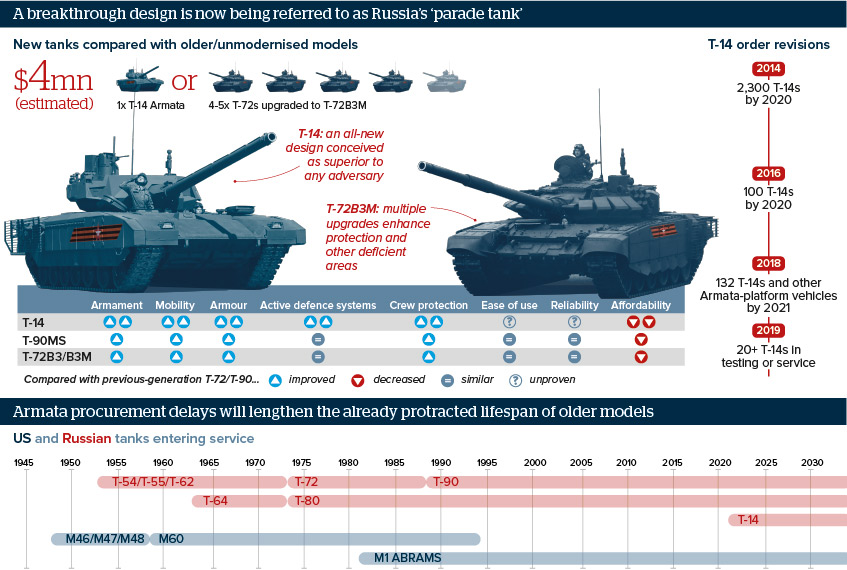Russia’s armour procurement decisions are hard-headed
The delay to introducing a revolutionary tank design is a calculated policy switch
Source: Kommersant; Regnum; Voyennoye Obozreniye; Voyennoye Delo; Interfax; Lenta.ru Photos: Reuters; Grigory Dukor / Maxim Shemetov
Outlook
Four T-14 Armata tanks rolled over Red Square in this year’s May 9 Victory Parade. Hailed as a next-generation ‘miracle weapon’, the T-14 will not be built in the numbers once planned to replace much of Russia’s tank force.
Officials last year slashed the numbers on order, arguing that modernised versions of 1970s-era tanks are cheaper and as good as potential adversaries’ tanks and should last another decade before becoming obsolete.
This policy reversal reflects fiscal constraints and procurement delays, but also decades of pragmatic thinking questioning the need for costly systems when cheaper ones are nearly as effective, available in larger numbers and more expendable on the battlefield.
Impacts
- Limited numbers of T-14s will be issued to front-line units in Western Russia.
- Elements of the T-14’s advanced technology will be retrofitted to T-72 and T-90 models.
- The Russian army will rely mainly on modernised T-72s and some T-90 purchases and upgrades.
- New T-90 production will mostly be for export, keeping arms factories in work.
- The T-80, once mothballed for its mechanical difficulties, is being refurbished for Arctic deployment.
See also
- German firm eyes Russian tanks in arms race - Aug 23, 2022
- Russian defence spending constrained by fiscal caution - Mar 22, 2021
- No clarity on Russian army’s main tank six years on - Feb 24, 2021
- Russian arms procurement faces fiscal constraints - Mar 29, 2019
- More graphic analysis
